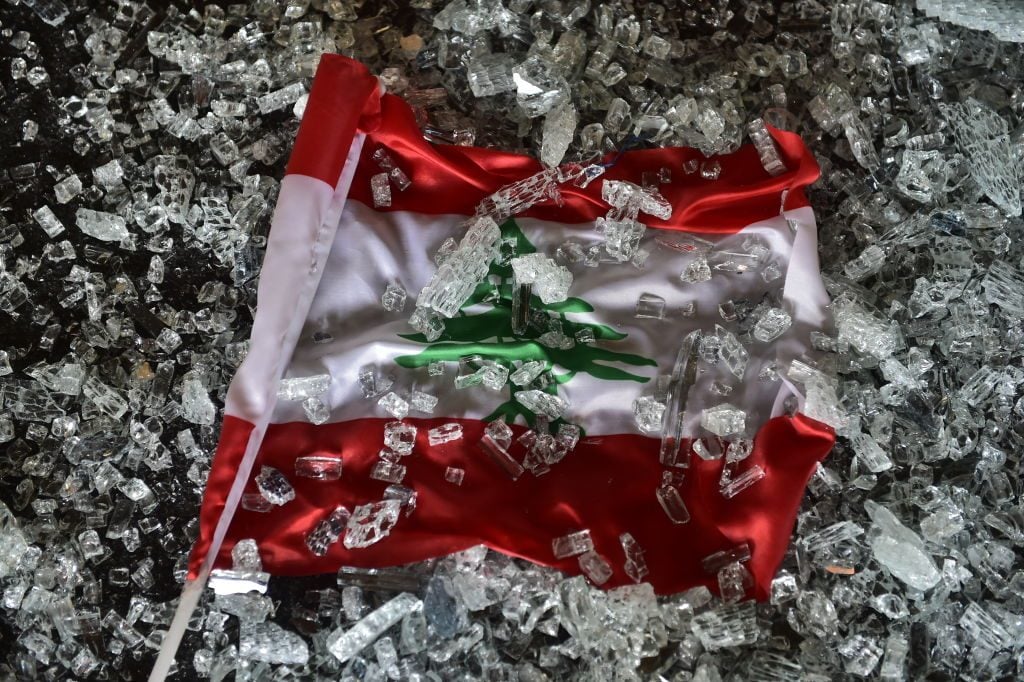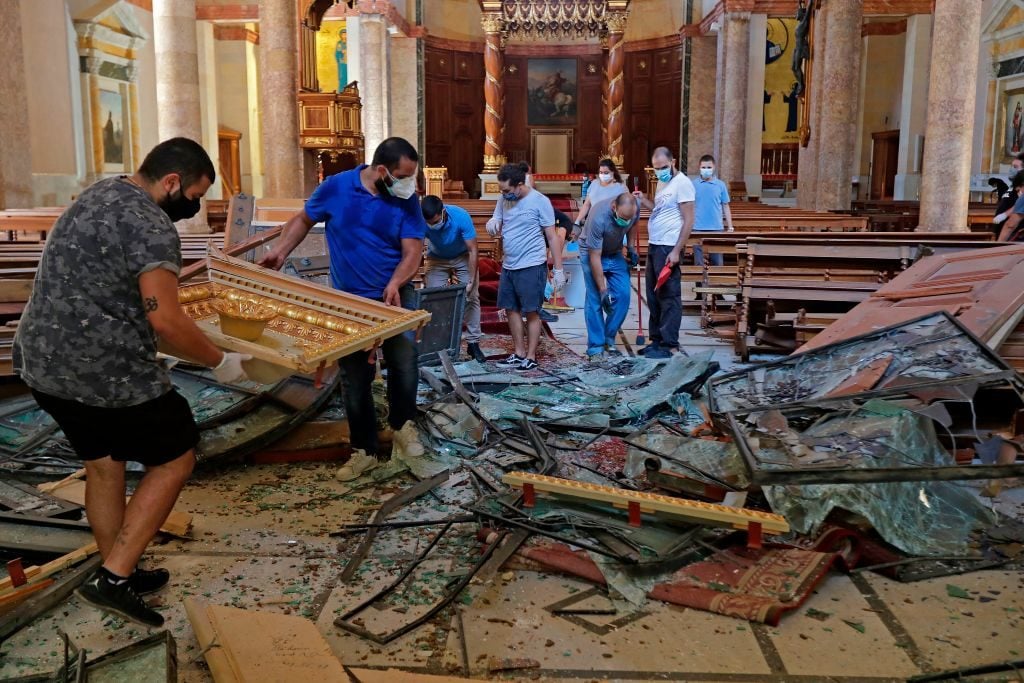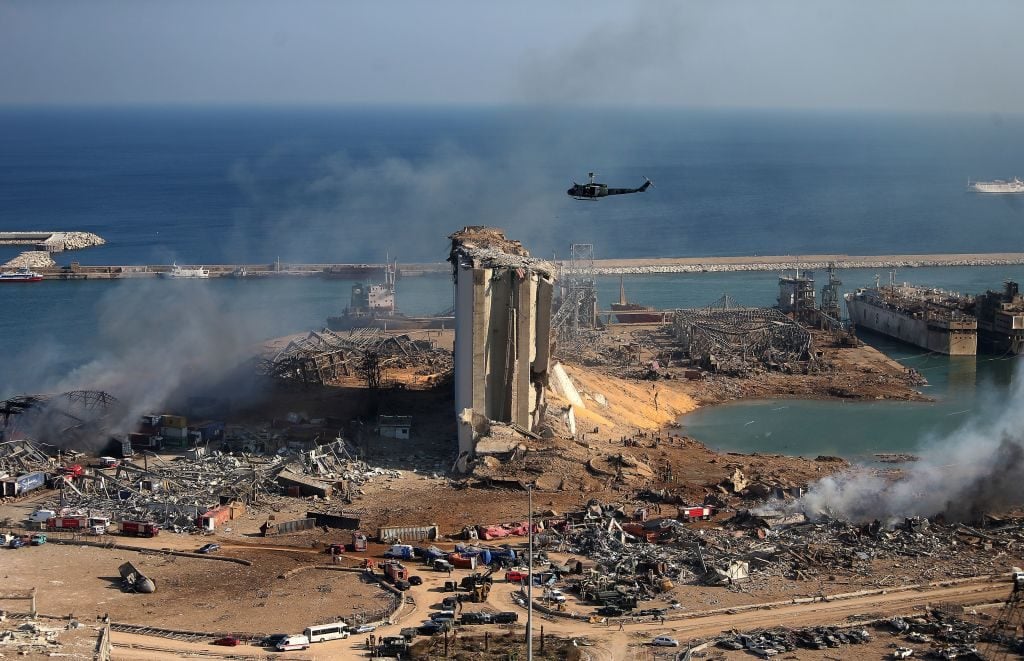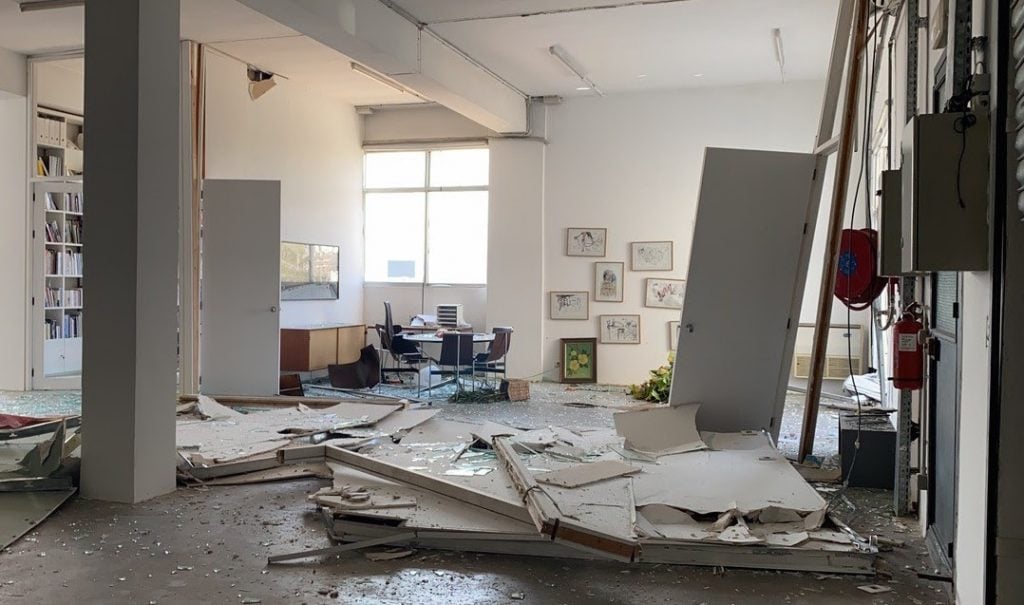Galleries
‘I Doubt It Is Worth Reopening’: Art Spaces in Beirut Are Decimated by the City’s Deadly Explosions
The blasts left at least 100 people dead, 4,000 wounded, and an estimated 300,000 homeless.

The blasts left at least 100 people dead, 4,000 wounded, and an estimated 300,000 homeless.

Naomi Rea

The eyes of the world are on Beirut after a terrifying series of explosions rocked the Lebanese capital on August 4, killing at least 100 people and wounding 4,000 more.
The two explosions in the city’s port sent shockwaves across the city, blowing out windows and causing massive damage to buildings even miles from the site of the blast. The incident could hardly have come at a worse time for Lebanon: the country was teetering on the verge of financial collapse even before the pandemic ravaged the global economy.
Beirut’s governor, Marwan Abboud, told press that at least half the city has suffered damage, leaving a reported 300,000 people homeless. Many major art galleries located near the port in the bustling Gemmayzeh neighborhood were among the spaces severely harmed in the explosion.
The Sursock Museum, a 19th-century villa that houses the modern and contemporary art collection of the Lebanese aristocrat Nicolas Sursock, was among those devastated in the blast, Artnet News has confirmed, as was the city’s Saint George Maronite Cathedral.

Sfeir-Semler Gallery in the aftermath of the explosion in Beirut. Image courtesy Sfeir-Semler.
Galerie Sfeir-Semler, which represents artists including Etel Adnan, Yto Barrada, and Lawrence Abu Hamdan, has also been damaged. A spokeswoman assured Artnet News that the damage was only material and that the gallery’s team is “safe and sound.”
“Our hearts are full of sorrow and we mourn for Beirut. Thanks to all who thought of us, sent a message, a note or a sign,” the gallery said in a statement.
Mark Hachem, owner of the eponymous gallery, also confirmed that his space was affected. “It is really a human tragedy that we still can’t believe,” Hachem told Artnet News.
The Art Newspaper also reports that Marfa Gallery, Galerie Tanit, and Opera Gallery’s Beirut outpost were completely destroyed. Representatives for the three galleries did not respond to inquiries by press time.

Beirut’s Saint George Maronite Cathedral in the aftermath of the blast. Photo by Joseph Eid/AFP via Getty Images.
A spokesperson for ARTLAB, a gallery dedicated to emerging art located near the site of the blast, told Artnet News that their team suffered only “skin deep wounds.” But the property destruction may be too much to bounce back from.
“The gallery has been gravely damaged and I doubt that it is worth reopening given the current conditions,” the spokesperson said, explaining that the cost of rebuilding will be exacerbated y the country’s current economic meltdown and the impact of COVID-19. The representative said the perimeter of the port area looked as if it had suffered from a nuclear attack.

A general view shows the damaged grain silos of Beirut’s harbor and its surroundings on August 5, 2020. Photo by STR/AFP via Getty Images.
Lebanon’s prime minister Hassan Diab said that the explosion was caused by 2,700 metric tons of ammonium nitrate, an industrial chemical commonly used in fertilizer, stored inside a warehouse. The owners of the warehouse were reportedly first warned about the dangers of storing the material—which is also found in mining explosives—without proper safety precautions in 2014.
Early reports indicate that the architect Jean-Marc Bonfils was among those killed in the explosion. Artnet News reached out to his studio to confirm, but did not hear back by press time.

Sfeir-Semler Gallery in the aftermath of the explosion in Beirut. Image courtesy Sfeir-Semler.
As the country continues to search for hundreds of missing people and treat countless others for their injuries, Lebanon has declared a national day of mourning for the victims of the blast. Its president Michel Aoun has released 100 billion Lebanese pounds from the 2020 budget for emergency recovery.